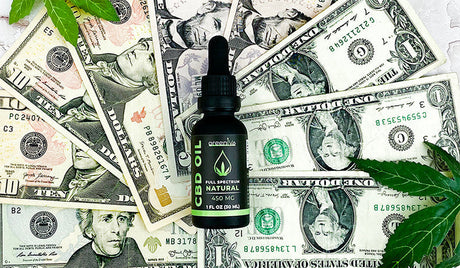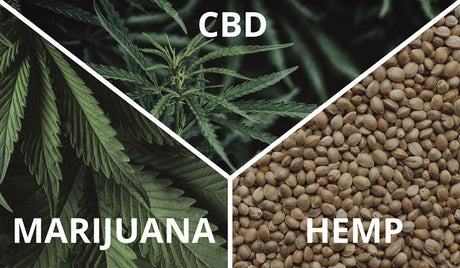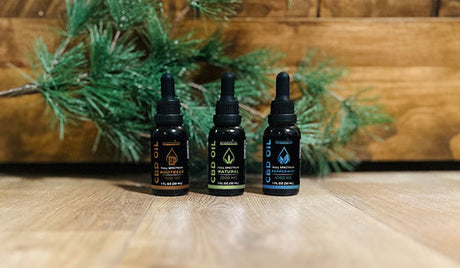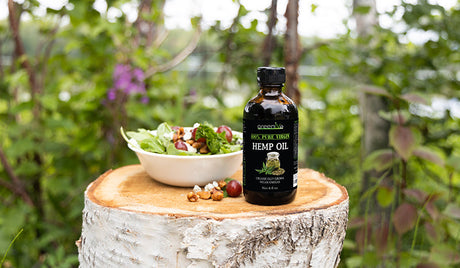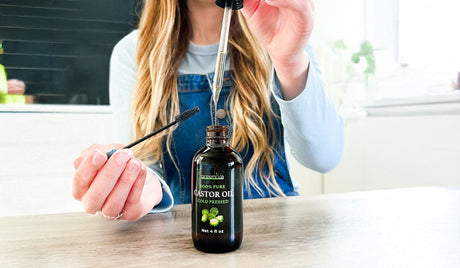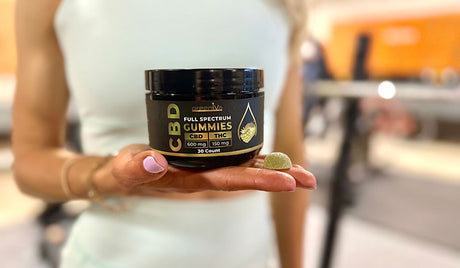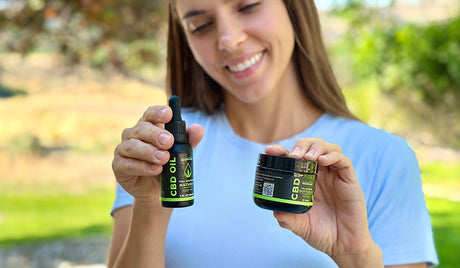Whether you're a fitness enthusiast or just starting your fitness journey, you're probably looking for ways to optimize your workout routine. One option that has been gaining popularity in recent years is CBD, a non-intoxicating compound found in the cannabis plant.
CBD is believed to have various potential health benefits, including improving symptoms related to discomfort and sleep and promoting relaxation. In this blog, we will explore how to use CBD for your workouts and to help you get the most out of your exercise regimen.
What Is CBD?
Before we get started, here is a brief background on CBD. Cannabidiol (CBD) is one of many chemical compounds found in the cannabis plant. CBD is becoming increasingly popular as a natural wellness substance. New research is exploring all the possible benefits that CBD has to offer.
Another well-known cannabinoid is THC. Unlike CBD, THC is a psychoactive cannabinoid that gives the user a " high " feeling. Cannabidiol does not have psychoactive effects, and it is well known for its potential benefits for assisting mood, discomfort, and sleep symptoms.
CBD may assist with these potential benefits because of its connection to the endocannabinoid system (ECS). THE ECS helps to regulate the body and support its natural function.
CBD was made legal on a federal level with the Agriculture Improvement Act of 2018 or the 2018 Farm Bill, as long as it does not contain more than 0.3% THC. While it is legal on a federal level, each state and local area has laws and regulations for CBD. We recommend checking local laws and regulations for your particular area before purchasing and using CBD.
How To Use CBD For Workouts
Incorporating CBD into your workout routine is easy to do. You can use CBD for pre-workout help, and you can also use CBD for post-workout help.

It can help in the preparation and recovery of your workout routine to help maximize your success. Several topics should be considered when using CBD for workouts. Let's discuss a few of those.
1. Talk To Your Doctor
If you're considering using CBD as part of your workout routine, it's important to talk to your doctor first. They can help you determine if CBD is safe for you and is likely effective based on your needs.
Hopefully, they will look at your overall health, medications, and any potential side effects you may be prone to. They should be your first stop on your CBD journey. After you have talked with your doctor, it's time to find the right type of CBD that is best for you.
2. Choose The Right Form of CBD
CBD comes in various forms like tinctures, capsules, topicals, and edibles, each with pros and cons. Professional athletes often use CBD for post-workout soreness. Topicals are ideal for targeted muscle tension relief, while tinctures or edibles may be better for general discomfort, though they may take longer to take effect. Using a CBD cream before or after a workout is ideal.
Capsules and edibles have a delayed onset but longer duration, while tinctures offer faster effects. Avoid high-THC CBD oil (full-spectrum) pre- or during athletic performance, as it can impair performance. Broad-spectrum or isolate CBD are safer pre-workout choices. THC-containing products may be more suitable for post-workout recovery before sleep.
3. Start With A Low Dose
After choosing the type of CBD to use, let's discuss the dosage. If you're new to using CBD, starting with a low dose and gradually increasing it until you find the dose that works best for you is important.

This will help you avoid unwanted side effects and ensure you get the maximum benefits from CBD. When finding the right dosage for you, it is important to consider your weight and body composition. The higher the weight, the more CBD is needed to feel the potential effects.
Remember, every person's body is different and will react differently to the effects of CBD. Dosage is not a one-size-fits-all with CBD, so don't be afraid to play around with the dosage with the help of your doctor. For more information on picking the right dosage, visit our CBD dosage calculator.
4. Use CBD Before or After Physical Activity
Now, let's move on to how to use CBD for your workout. CBD can be used before or after your workout to help you get the most out of your exercise regimen. If you're using CBD for pre-workout, it may help to promote discomfort relief.
This can help improve your overall performance enhancer and workout quality. This may also help to push through previously sore muscles damaged to help you push yourself harder during your workout.
Suppose you're using an amount of CBD for post-workout. In that case, it may help to reduce delayed onset muscle soreness and promote recovery, allowing you to get back to your next workout faster and reduce the chances of starting your cheat day early.
It can also promote better sleep, which is crucial to muscle recovery. For a more detailed description of CBD for post-workout recovery, check out our blog titled "How to use CBD for Muscle Recovery."
5. Combine CBD With Other Healthy Habits
While CBD can be a helpful addition to your workout routine, it's important to remember that it's not a magic solution. Combining CBD with other healthy habits, such as eating a healthy diet, staying hydrated, and getting enough sleep, is important to get the most out of your exercise regimen and recovery process.

Combining these healthy habits with all you have learned about CBD for workouts may improve your workout and overall health. CBD will not make you more fit; it may improve your recovery journey.
How Much CBD Should You Take When Exercising?
CBD dosage for exercise varies based on individual body chemistry, the CBD product used, and the desired effect. Start low and gradually increase while monitoring your body's response. A common starting point is 10-20mg orally before exercise, but some may need more or less depending on weight, metabolism, and sensitivity.
Higher doses (50-100mg or more) may be appropriate for discomfort support or to reduce inflammation. Finding the right dosage requires experimentation; listen to your body and adjust accordingly. This information pertains to oral CBD; topical CBD creams are generally safe if used as directed on the label.
Is It Safe To Exercise With CBD
Using CBD, especially THC-containing products, before or during exercise poses potential risks. THC can impair coordination, balance, and reaction time, increasing the risk of injury. Varying THC levels in products can lead to unpredictable effects.
Higher THC concentrations may negatively impact performance and, in some individuals, cause anxiety or paranoia. Both CBD and THC can interact with medications and supplements, potentially affecting exercise response.
Caution is advised when combining CBD, particularly with THC. Consult a healthcare professional before use to discuss potential risks and benefits. Topical THC, however, is unlikely to affect performance as it is minimally absorbed into the bloodstream. Only purchase CBD products with third-party lab tests to ensure quality.
Sum It Up!
CBD shows promise for enhancing workout routines by potentially aiding discomfort management, relaxation, and sleep. However, careful consideration is essential. Consulting a healthcare professional is crucial for safety and suitability.
What to do before taking CBD for workout enhancement:
- Check with your doctor if your safe to take it.
- Choose the right CBD product for your situation.
- Start with a low dose for you first trial run.
- Decide when to take CBD before or after you workout.
- Form other healthy habits to assist CBD.
Choosing the right CBD form, starting low, and understanding pre- and post-workout use is key. CBD works best alongside healthy habits like diet, hydration, and rest. While research continues, a thoughtful approach can help individuals explore CBD's potential fitness benefits. Prioritize health, and remember that individual responses vary.
GREENIVE CBD PRODUCTS



